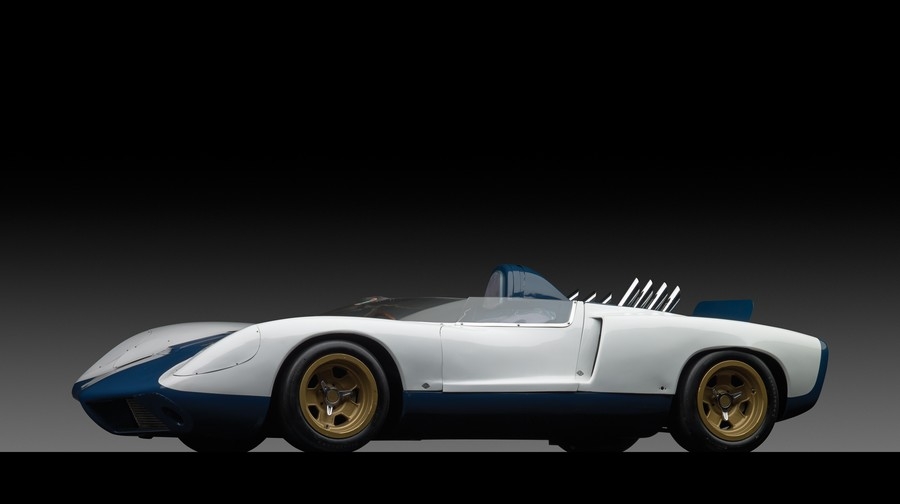SCM Analysis
Detailing
| Vehicle: | 1964 Chevrolet CERV II |
| Years Produced: | 1964 |
| Number Produced: | 1 |
| Original List Price: | N/A |
| Tune Up Cost: | $500 |
| Distributor Caps: | $40 |
| Club Info: | General Motors Heritage Center |
| Website: | http://www.gmheritagecenter.com |
| Investment Grade: | A |
This car, Lot 139, sold for $1,100,000, including buyer’s premium, at RM’s Art of the Automobile auction in New York, NY, on November 21, 2013.
Next to factory race cars, it’s concept cars, prototypes and coach-builts that usually command Maharaja money when trading ownership. So it was somewhat surprising to find that the CERV II — a one-of-a-kind engineering exercise that is indelibly linked with Zora Arkus-Duntov and the “racing ban” era at GM — garnered a relatively plebeian $1.1 million at RM’s big art gallery sale in the Big Apple.
Surprisingly, at the same event, this emblem of Zora’s future-think was outpaced by such production cars as a 1960 Mercedes-Benz 300SL Roadster at $1.65m, a 1961 Ferrari 250 GT Cabriolet Series II at $2.035m, and a 1958 BMW 507 Series II at $1.65m. But that’s not the worst of it.
What really hurt was that a 1958 Oldsmobile 98 convertible brought in $259k, a 1970 Plymouth Superbird garnered $363k and a 1966 Jaguar E-type Series I 4.2-liter roadster earned $467.5k. These plentiful and replaceable production cars brought 24%, 33% and 43%, respectively, of the one-of-a-kind CERV II’s price. By all standard measures of collector-car value, these cars flew while the CERV II flopped. So what happened here?
Safety in numbers
The big price drivers that rewarded the production cars — but held the CERV II back — were investment safety, practicality of use, and emotion. First, buyers who are in it for the money — rather than the history — find comfort in numbers, just like a migrating herd of elk. For example, enough Gullwings, DB5s and 250 Ferraris are sold annually to provide a clear value baseline for these vehicles, and with it comes perceived safety for buyers.
The result is a robust market for esteemed production cars, even in shaky economic times. Whereas the CERV II is not a herding animal at all, but more like a lone wolf. There are no other vehicles quite like it, making establishing comps more difficult. For buyers looking for safety as well as value growth potential, production cars are clearly more attractive.
Usable or garage queen?
Second, there’s the business of oh, say, actually driving your million-dollar investment. I promise that your wife will like riding in your Lusso to Cars and Coffee. And doing the Tour d’Elegance in your Pebble-quality Daytona might be okay as well. The CERV II? That’s way tougher, because you need a track and crew, and also must deal with its (likely) mechanical idiosyncrasies. Bottom line, the possibilities for enjoying the CERV II in anything other than a garage setting are more challenging.
Fate plays a part
Finally, there’s the awkward business of how emotion ties to value. I figure that since no one actually needs a classic car (it’s way easier to take the X5 to Starbucks), most of their inherent value is emotionally driven. Prescient as it was, onstage CERV II was worth only 8% to 16% of a 1963 Corvette Grand Sport, which was also shortchanged by the no-racing era — but managed to race and win anyway.
Bottom line, had fate taken a different lane, and the Corvette C3 had become the mid-engine, four-wheel-drive car that Zora envisioned, then the CERV II might be worth the same $7 million to $13.5 million as a 1963 Grand Sport. But it didn’t, and it isn’t. Righteously well bought. ♦
(Introductory description courtesy of RM Auctions.)
[nggallery id=224]
